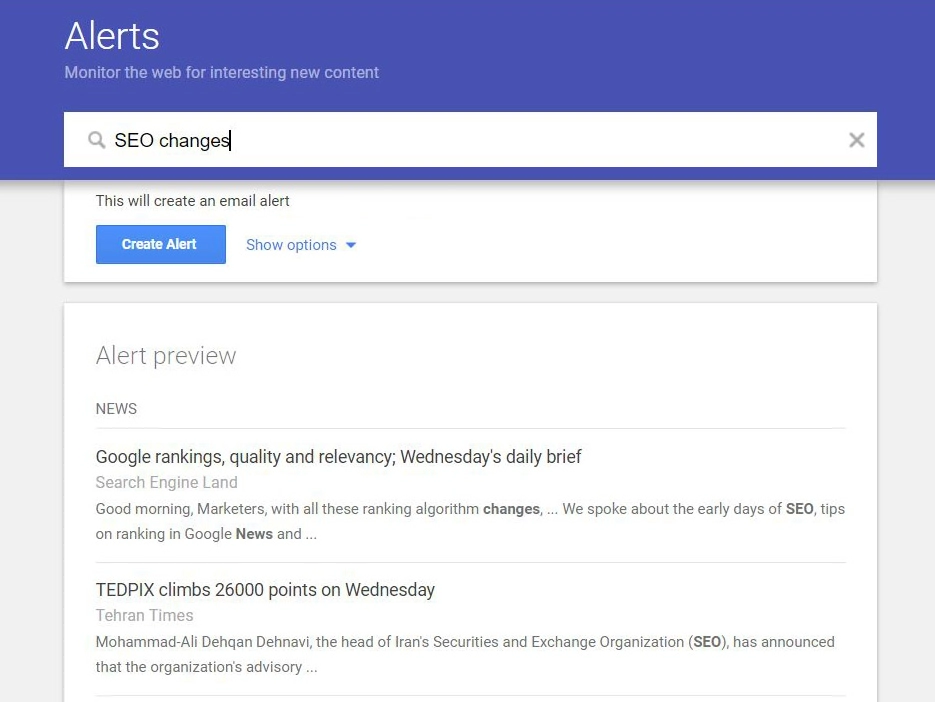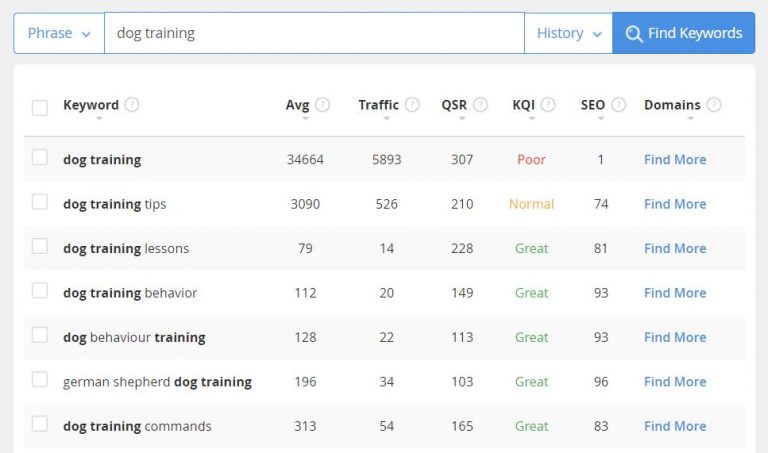If you want to rise above the competition in the SERPs, all you have to do is publish high-quality content.
Sounds easy, right?
However, there are a couple of problems with this. Everyone thinks that their content is the highest quality out there.
Also, high-quality content is perhaps one of the most difficult aspects of SEO to define. Too often, people are focused on all the wrong things such as word count, keyword density (groan!), or formatting.
Content marketing strategists are constantly telling us that “content is king” and it’s critical for SEO.
But what exactly does that mean?
What is High-Quality Content?
In short, high-quality content achieves its marketing goals. It’s also:
- Comprehensive.
- Useful.
- Helpful.
- Educational.
- Accurate.
- The best answer for the searcher’s query.
Perhaps your primary focus is on increasing the number of social shares on Facebook. If your content is connecting with your audience and getting more shares, it’s a success.
Advertisement
Continue Reading Below
But for another business whose main objective is generating more leads, that exact same content might not be performing well at all if it’s getting Facebook shares but failing to attract new leads.
Does that mean this is low-quality content? It all depends on who you ask.
Some of the most common KPIs to determine the value and effectiveness of your content include:
- Ranking in the top three of Google for your target keyword(s).
- Increasing brand awareness and customer loyalty.
- Generating leads and sales.
- Improving click-through rates and lowering bounce rates.
- Increasing overall web traffic through a strong overall presence in organic search results.
- Getting social shares and visits to your site from social media platforms.
- Improving on-site conversions and bottom-line revenue.
- Attracting a number of relevant links from authoritative domains.
If your content is achieving these top KPI goals, you’re on the right track with your content strategy.
Top 10 Ways to Produce High-Quality Content
Once you’ve set the parameters necessary to analyze the success or failure of your content marketing strategy, it’s time to start producing.
Here are 10 tips to keep you on track.
1. Know Your Search Intent and Call to Action
Search intent is the reason behind someone seeking out information online.
Advertisement
Continue Reading Below
They may be searching for general information about a topic, looking for an answer to a question, seeking a solution for a problem, or browsing for a product to buy.

Before you start creating content, you need to understand how people will be finding and using it, as well as what outcome you want to see.
Are you trying to sell a product or service? Build your email subscriber list?
How can the needs of your audience work hand-in-hand with your marketing goals?
All of this needs to be factored into your content strategy so your call to action (CTA) can align with your content goals and user intent.
2. Use Proper Formatting for Readability
You want your content to be easily read, not just for your consumers but also for search engines as they crawl, index, and rank your website.
The way you format your content plays a big role in its overall performance. People skim through articles, which is why headings and subheadings, lists, and small blocks of text broken up by white space are easy to digest.
People don’t respond well to giant blocks of text, and neither does Google.
3. See What’s Trending and Create a Backlog of Content Ideas
All content begins with a topic. The topic you choose can make or break the effectiveness of your content marketing strategy.
It’s important to pick relevant topics that your audience will care about.
Advertisement
Continue Reading Below
Check out your competitors to see what kind of content they’re publishing. If you’re like me and don’t have the time or patience to do that, tools like BuzzSumo and ExplodingTopics can help you find trending topics.
As you compile your list of topics, start filling in your editorial calendar to ensure you’ll never find yourself scrambling for a new topic at the last minute.
4. Do Thorough Research to Maintain Trust and Authority
Consumer trust in institutions and media is at an all-time low, according to the 2021 Edelman Trust Barometer.
It’s more important than ever to make sure your content is trustworthy, which means you need to do thorough research and find data to back up your assessments.
Even if you’re writing about your own personal experiences, research is still important. You don’t want to risk losing your audience’s trust by presenting inaccurate information. Cite current and up-to-date studies and data.
One way to stay on top of any relevant updates is to set up Google Alerts for topics of interest. You can even do this with your own name and brand to quickly respond to online mentions.

5. Make Topics Unique by Adding Your Own Perspective
Advertisement
Continue Reading Below
“There is no such thing as a new idea. It is impossible. We simply take a lot of old ideas and put them into a sort of mental kaleidoscope. We give them a turn and they make new and curious combinations. We keep on turning and making new combinations indefinitely; but they are the same old pieces of colored glass that have been in use through all the ages.”
The truth is, we’re always recycling content. But what makes it unique and worth reading is our own perspective.
Perhaps that means injecting your notorious sense of humor into an article that would normally be a serious topic. Or weaving personal stories and anecdotes throughout a piece of content.
With a little creativity, you can recycle content through your “mental kaleidoscope” and make it uniquely yours.
6. Capitalize on Your Own Experiences, Studies, and Data
Creating your own data and capitalizing on content that talks about your experiences are a huge plus for SEO.
Advertisement
Continue Reading Below
If your experiences are detailed, useful, and thorough enough, you’re likely to have other people reference them and include a citation back to your website.
Backlinks on credible sites can help to give your SEO a massive boost.
Talking about your own personal experience, even if you’re disputing a popular opinion, also helps to establish you as an authority figure.
You aren’t just talking about another article you read – you can personally attest to an assertion that you’re making.
That level of authority makes people listen and take you more seriously.
7. Target a Niche Subtopic
To be fair, most of the topics we write about are technically subtopics. But I recommend diving even deeper.
Why?
To start, you’ll have less competition.
Targeting a wide topic, like “dog training,” for example, is too broad. There are tons of competitors vying for that keyword.
My content is going to be a tiny fish in the ocean, especially if I’m just starting to develop my content strategy and haven’t had a chance to establish my website yet as a worthy authority.

However, narrowing the focus down to “dog training behavior” or “dog training commands” means I have a much higher chance of ranking on Page 1.
Advertisement
Continue Reading Below
My site becomes a big fish in a small pond, and my content is targeted directly toward people who are looking for specific information that I can provide.
There are plenty of tools you can use to analyze keywords and topics. The example I used above is from Jaaxy.
Make sure you do some research to see if subtopics within your niche that aren’t regularly discussed will resonate with your audience.
8. Diversify with Multimedia Content
Visual content is easier for people to process and remember than plain text. Types of visual assets that complement written content well include:
- Screenshots.
- Photos.
- Infographics.
- Charts.
- Videos.
- Gifs.
- Memes.
Using multimedia to enhance your content can improve engagement and, in many cases, is an effective way to illustrate a point or provide an example.
9. Review and Edit Prior to Publishing
If high quality is your main focus, then publishing first drafts without so much as a quick proofread shouldn’t even be on your radar.
Advertisement
Continue Reading Below
This is where an editorial calendar can become a major asset. Use it to check on deadlines and give yourself enough time to write an article, let it sit for a day or two, and then come back and polish it up.
Don’t push out hastily written, unedited content and expect to maintain your high-quality reputation.
10. Use Analytical Data to Measure Content Performance and Adjust Your Strategy
The proof of your content’s success is going to be in the numbers.
Even if you think you’re producing high-quality content, your audience may disagree. And if that’s the case, it doesn’t matter what you think – it’s the consumers who have the final say over what content is valuable and what is not.
Use your top KPIs that we discussed at the beginning of this article to gauge how your content is doing.
See which topics are performing well and which ones have little or no traffic.
Advertisement
Continue Reading Below
This information will give you a basic roadmap of where your focus should be moving forward.
Conclusion
It’s an undeniable truth – if you want to stand out from the avalanche of content being produced every single day, you have to focus on quality.
It’s one of the best ways to cement your authority within your niche, engage your audience with the topics that matter to them most, and set your website up for success with search engines.
Creating high-quality content is one of the most difficult aspects of SEO, but creating the best content you possibly can has been proven time and again the best way to attract the most relevant audience.
Always strive to be the best you can be. You don’t need to chase after skyscraper content or 10X content, or whatever else the latest buzzwords tell you to do. You just have to create content that is better than your closest competitor’s.
Put yourself in a searcher’s shoes. If your article was ranking #1, would that searcher be happy with how that content answers their question, solves their problem, and brings value and utility to their life?
Advertisement
Continue Reading Below
Don’t go chasing algorithms… or waterfalls. Or anything else. The secret to high-quality content is writing to your audience.
More Resources:
Image Credits
All screenshots taken by author, July 2021
 seolounge
seolounge